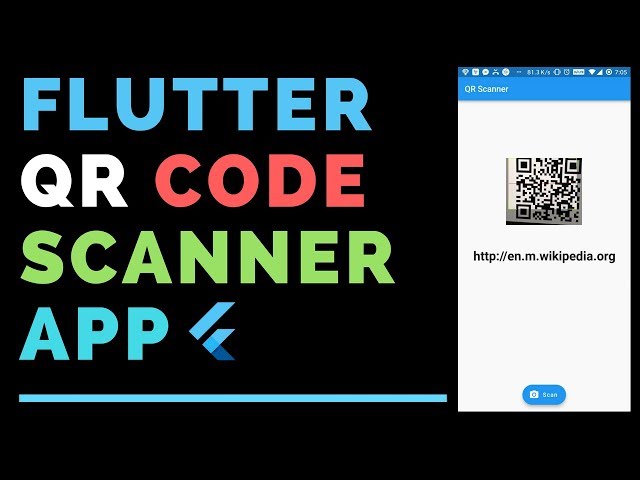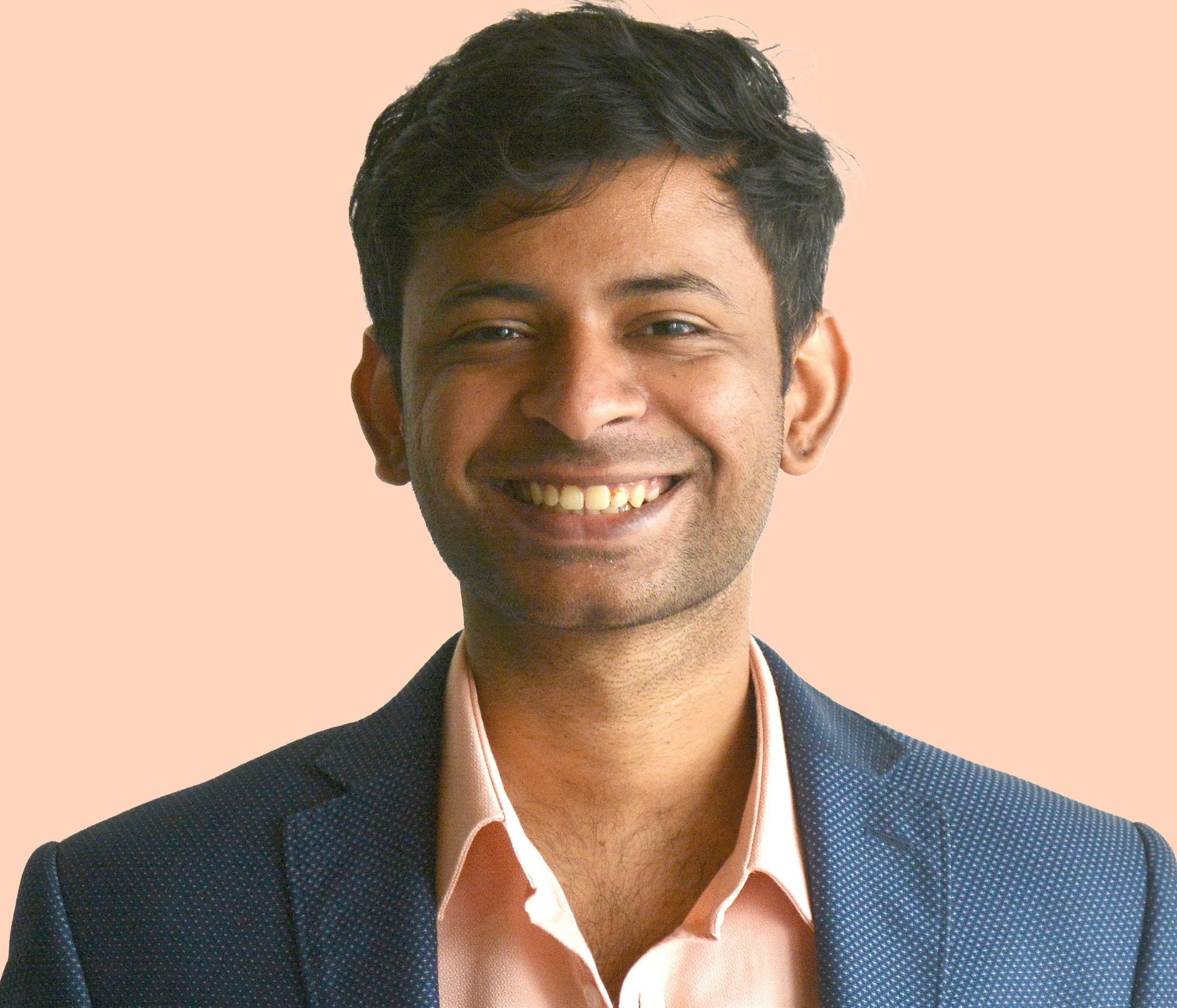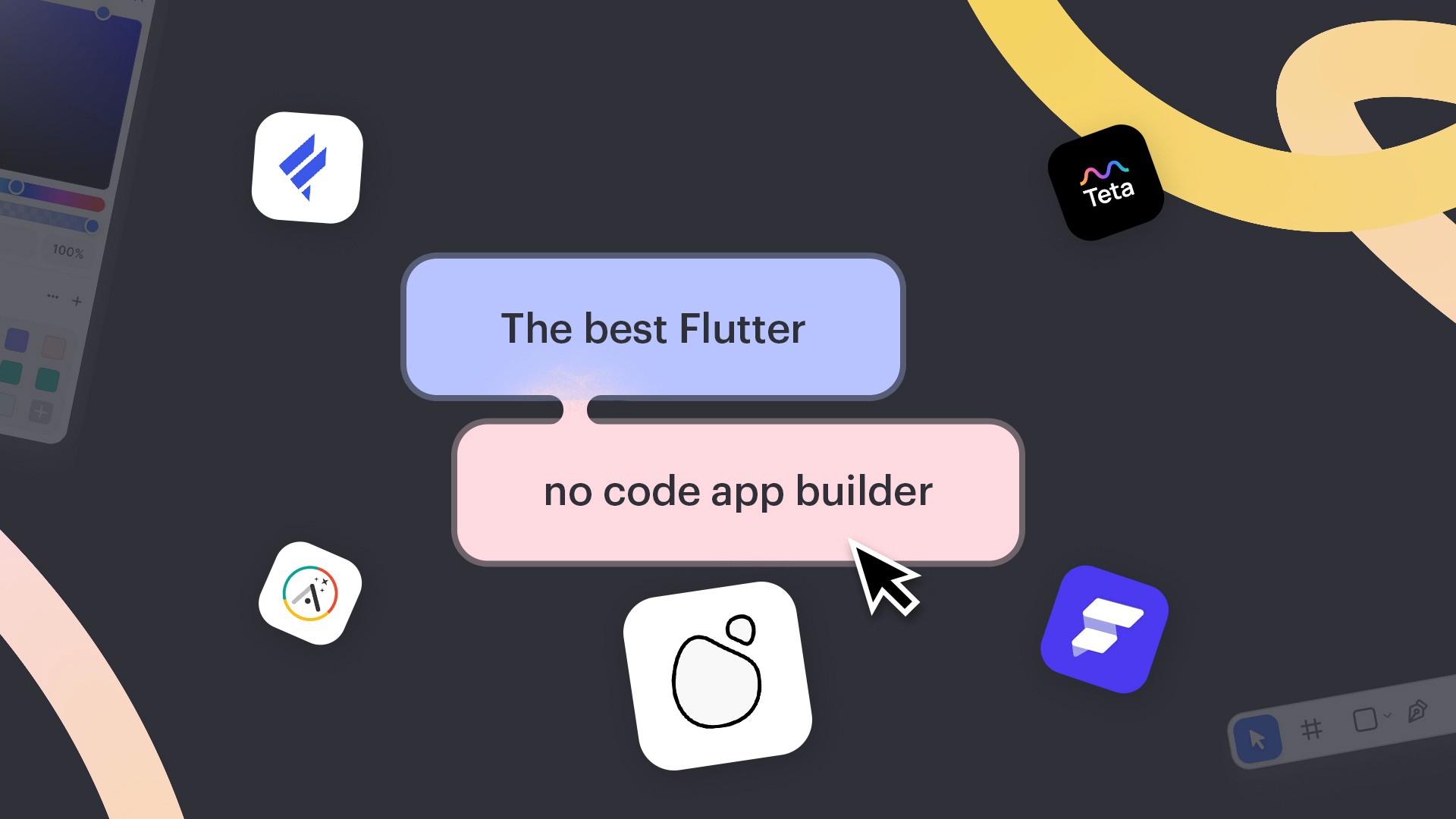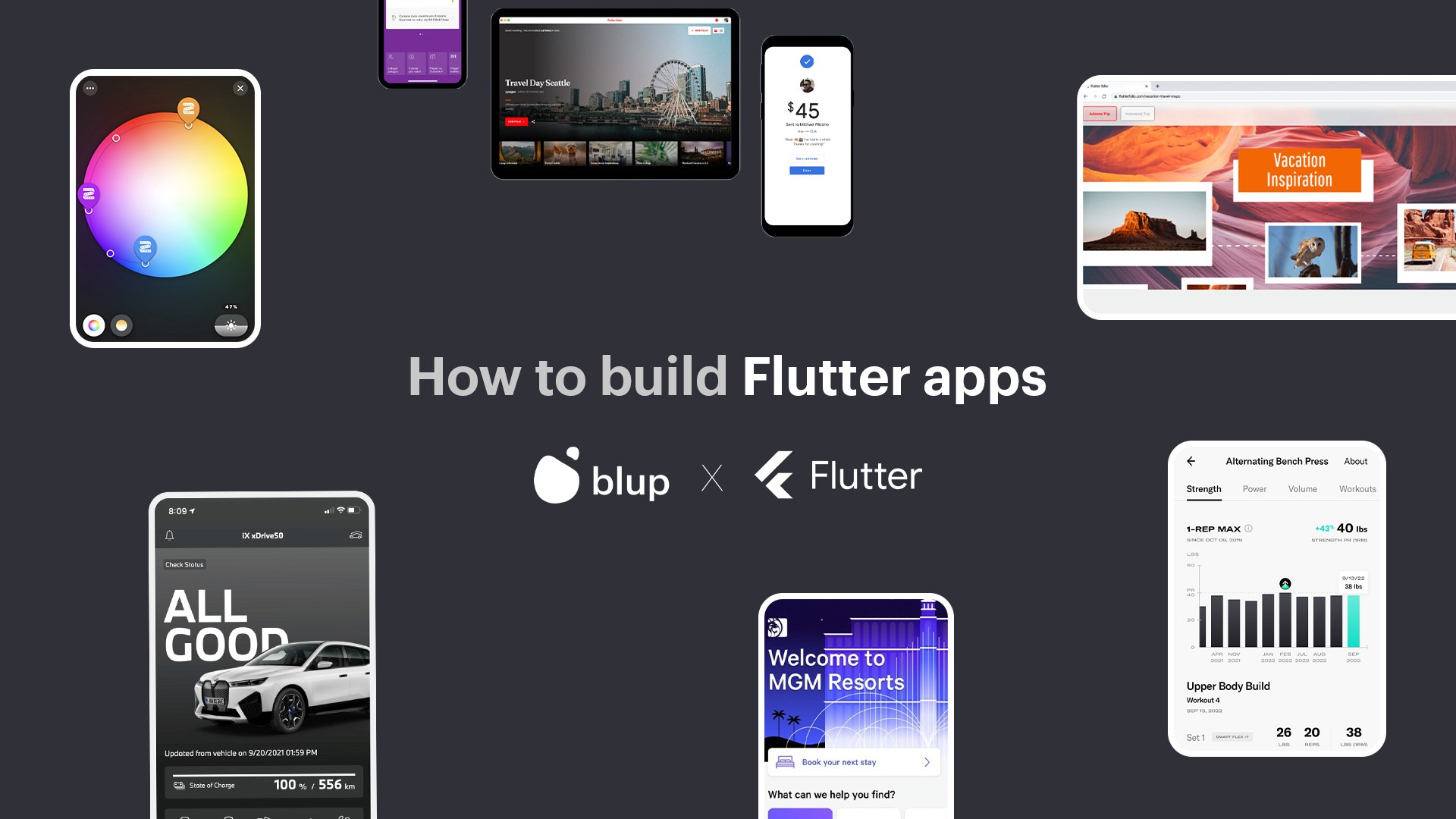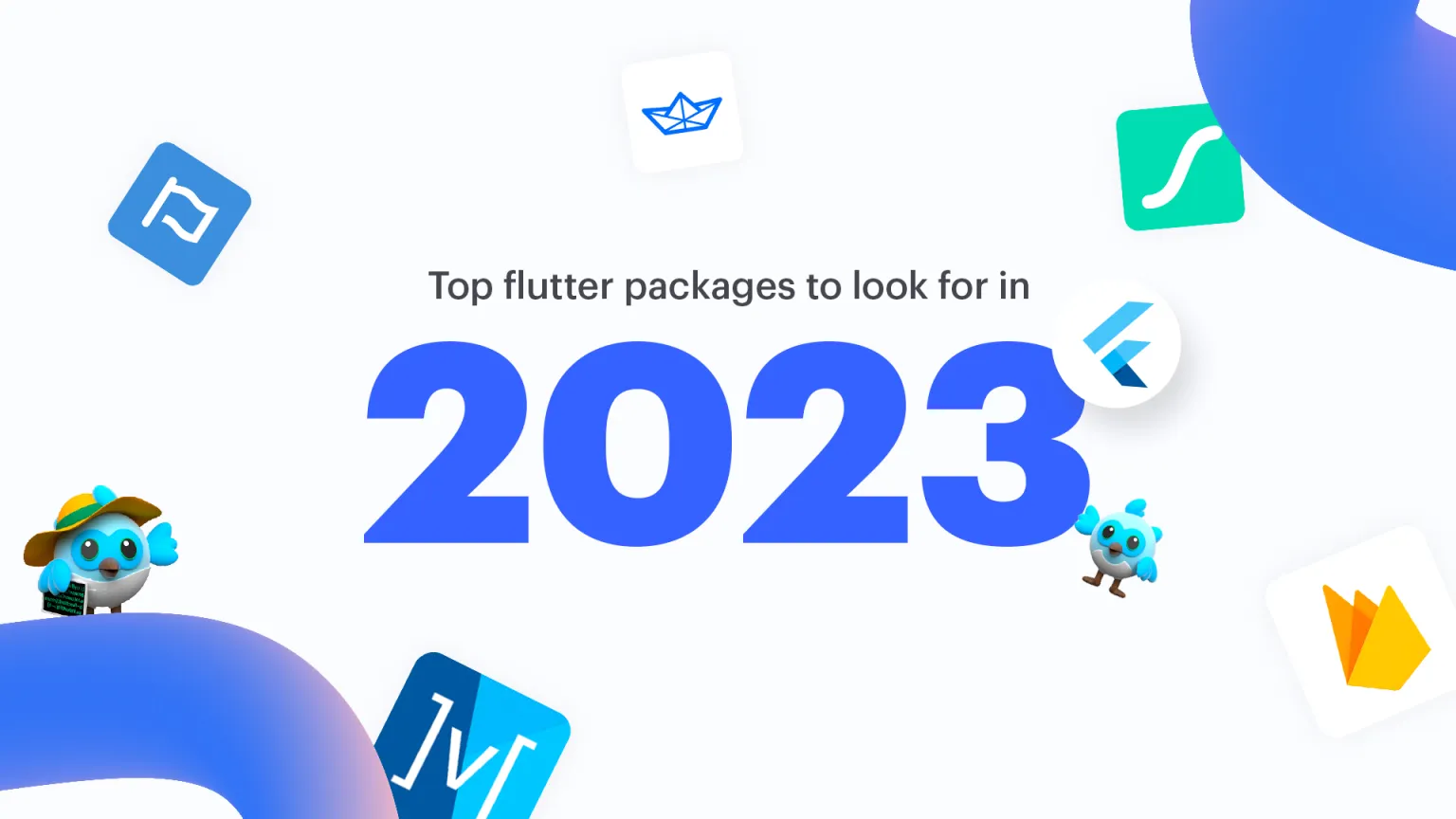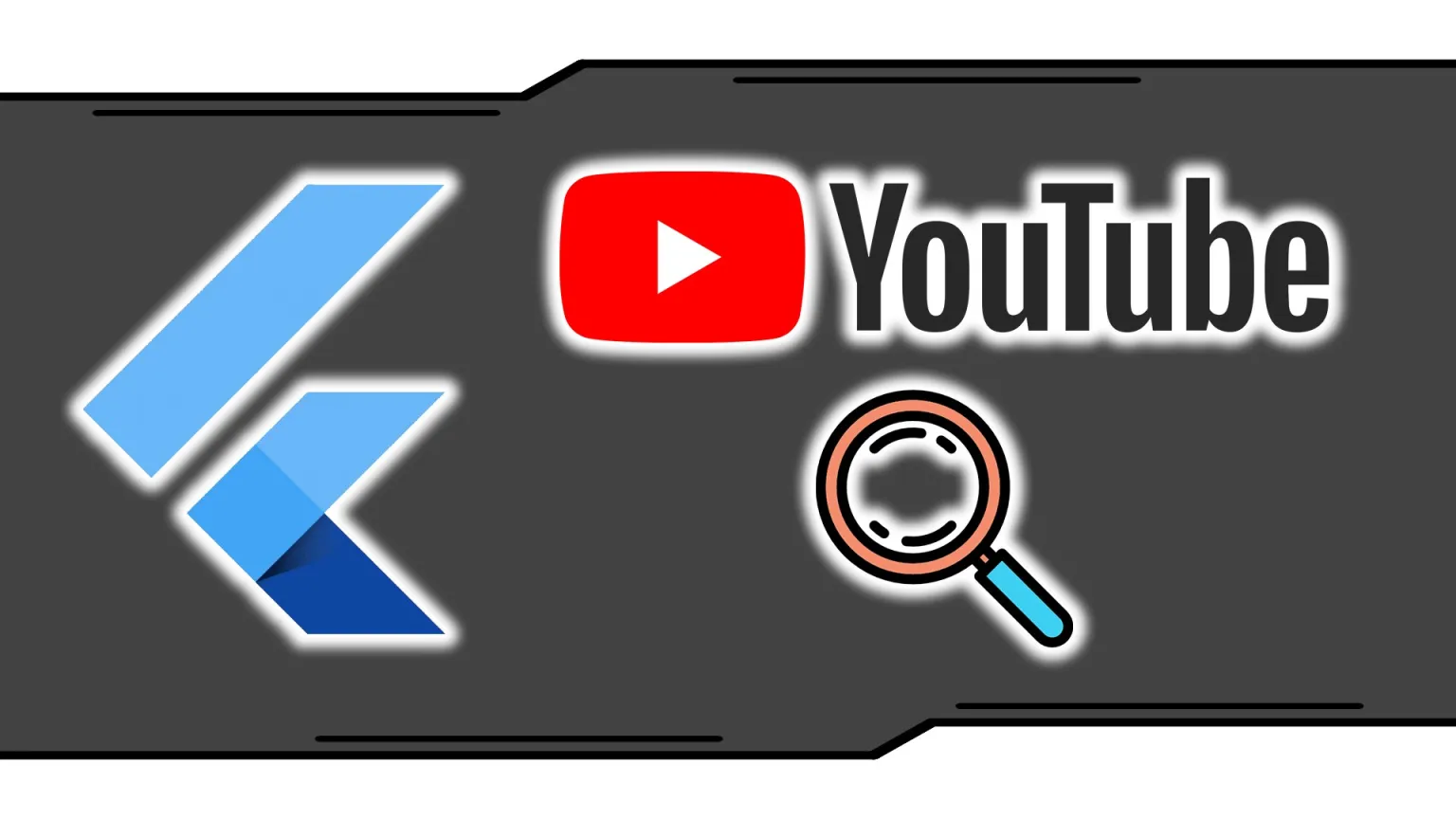How Difficult Is It to Learn Flutter and How Long Does It Take?
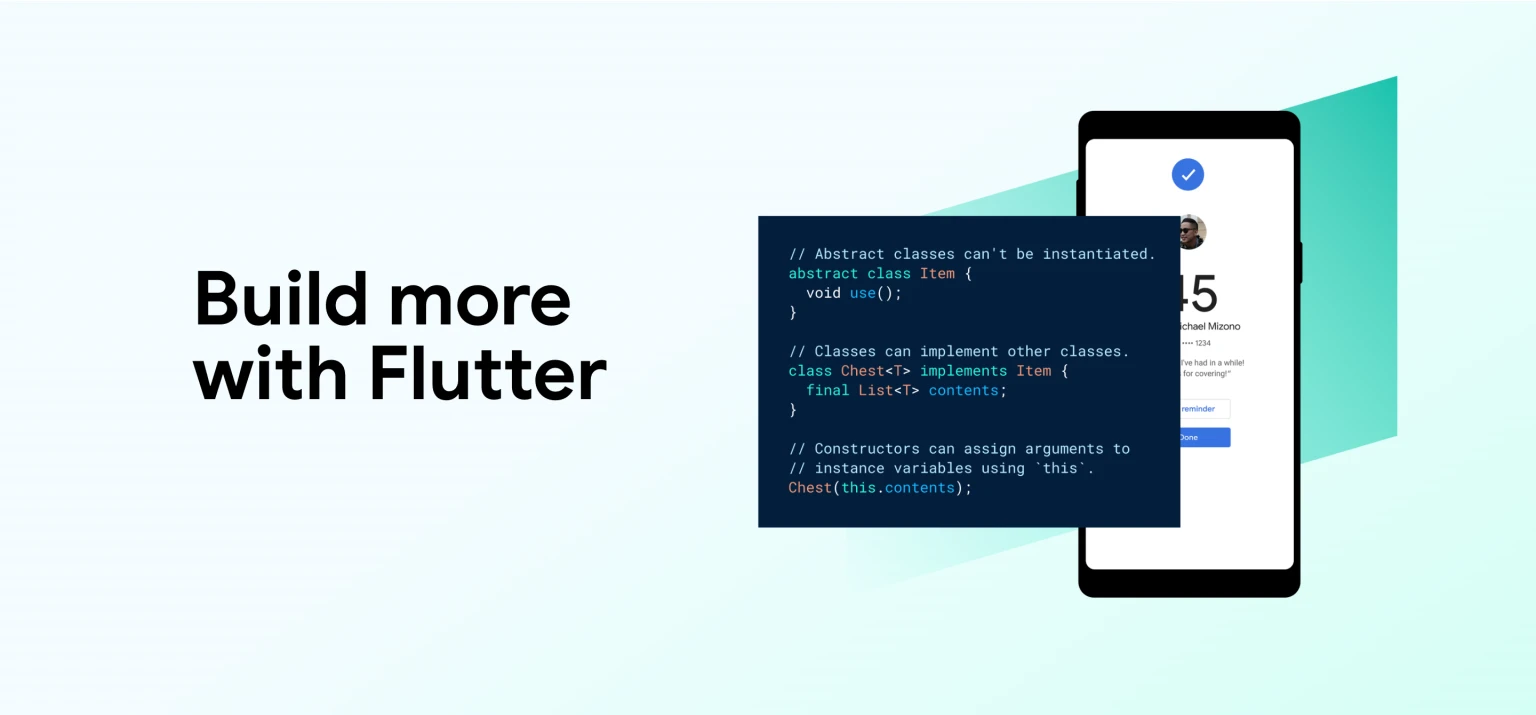

Mastering Flutter: Your Guide to Learning and Becoming Proficient in Flutter Development
In a world driven by mobile applications, Flutter has emerged as a powerful cross-platform app development framework, backed by tech giant Google. With its unique blend of creativity and technical prowess, Flutter has gained immense popularity among developers and businesses alike. As the demand for high-quality, visually appealing, and performant mobile apps continues to rise, mastering Flutter has become a key skill for developers seeking to make their mark in the industry.
But Flutter is more than just a framework. It's a canvas where your imagination takes flight, enabling you to create stunning and seamless user experiences across iOS, Android, web, and desktop platforms. With Flutter, you have the power to craft beautiful UIs using a rich set of customizable widgets, all while benefiting from the framework's native-like performance.
What sets Flutter apart is its unique approach to development. With its hot reload feature, you can iterate and experiment with your code in real-time, seeing instant results and speeding up the development process. Flutter's single codebase philosophy means you can write code once and deploy it across multiple platforms, saving time and effort. And with Flutter's support for both Material Design and Cupertino widget sets, you can ensure your app has a native look and feel on each platform.
But it's not just about the technology; it's about the opportunities that Flutter brings. As businesses increasingly embrace Flutter for their app development needs, the demand for skilled Flutter developers is soaring. By mastering Flutter, you position yourself at the forefront of this growing market, opening doors to exciting career prospects and projects.
In this comprehensive guide, we will take you on a journey to master Flutter development. We will delve into the core concepts, explore advanced techniques, and equip you with the tools and knowledge needed to become proficient in Flutter. This tutorial will offer you with the perspective and materials you need to flourish in Flutter development, regardless you're a novice or an experienced developer wishing to extend your skill set.
So, are you ready to embark on this exhilarating journey of mastering Flutter? Let's dive in and unleash the full potential of this remarkable framework together.
Flutter Learning Difficulty and Time
How hard is it to learn Flutter?
It is much simpler to learn Flutter than other application development Frameworks. Learning Flutter can present some challenges, particularly for beginners. However, with its user-friendly features, intuitive UI widgets, and comprehensive documentation, it becomes easier to grasp over time. Dedication and consistent practice are essential to conquer the learning curve and become proficient in Flutter development.
Understanding the Learning Curve:
When it comes to learning a new framework, one of the common concerns is the learning curve. Fortunately, Flutter offers a smooth and rewarding learning experience. Its unique approach to app development, based on the Dart programming language, provides developers with a familiar syntax that is easy to grasp, especially for those with prior programming experience.
Compared to other frameworks, Flutter stands out with its simplicity and efficiency. Its reactive and declarative programming style allows developers to build UIs effortlessly, resulting in code that is concise, readable, and maintainable. While every learning journey is different, many developers find that Flutter's learning curve is relatively gentle, enabling them to quickly start building impressive apps.
User-Friendly Features and Intuitive UI Widgets:
Flutter's user-friendly features contribute to its ease of learning. The framework offers a rich set of pre-designed UI widgets that are visually appealing and highly customizable. These widgets, ranging from buttons and text fields to complex layouts, empower developers to create stunning and responsive user interfaces with minimal effort.
Additionally, Flutter's hot reload feature greatly enhances the development experience. It allows developers to see instant changes in their app's UI while preserving the app's state. This iterative and rapid feedback loop accelerates the learning process, as developers can experiment, make adjustments, and observe the results in real-time.
Beginner-Friendly Approach:
While prior programming experience can be advantageous, it is not a prerequisite for learning Flutter. The framework's comprehensive documentation and extensive community support make it accessible to beginners. Flutter's documentation covers everything from getting started to advanced topics, providing clear explanations, examples, and tutorials.
Furthermore, Flutter's vast community is welcoming and supportive, offering resources like online forums, chat groups, and open-source projects. This collaborative environment enables beginners to seek guidance, ask questions, and learn from experienced developers, fostering a sense of community and accelerating the learning process.
With dedication, practice, and a growth mindset, even beginners can become proficient in Flutter development. As they gain experience and tackle real-world projects, they will unlock the full potential of Flutter and its capabilities.
In conclusion, while learning any new framework requires effort, Flutter's learning curve is user-friendly and its features are intuitive. Whether you are an experienced developer or a beginner, Flutter provides a robust foundation for building cross-platform apps. Embrace the journey, leverage the extensive resources available, and embark on a learning adventure that will empower you to create beautiful and performant apps using Flutter.
How long does it take to learn Flutter?
You can learn Flutter in 2 to 6 weeks depending upon your prior programming experience. The time required to learn Flutter varies depending on factors such as prior programming experience, commitment, and learning style. While it may take a few months for dedicated learners to gain proficiency, the continuous learning process is vital for staying updated with Flutter's evolving ecosystem and enhancing skills in app development.
Learning a new framework like Flutter is an exciting journey that can lead to great career opportunities. The duration to learn Flutter varies from person to person, depending on various factors such as prior programming experience, time commitment, and individual learning style. While there is no definitive timeline, with dedication and consistent effort, learners can gain proficiency in Flutter within a few months.
Flutter's learning curve is designed to be accessible for both experienced developers and beginners. Those with prior programming experience may find it easier to grasp the concepts and syntax of Flutter, leveraging their existing knowledge of object-oriented programming and UI development. However, even individuals new to programming can learn Flutter effectively by dedicating time to practice and exploration.
To accelerate the learning process, it is recommended to immerse oneself in the Flutter ecosystem. Engaging with Flutter's extensive documentation, official tutorials, and sample projects can provide a solid foundation. The Flutter community is also a valuable resource, offering forums, blogs, and online communities where learners can seek guidance, share insights, and learn from experienced developers.
While a few months is a reasonable estimate to gain proficiency in Flutter, it's important to note that learning is an ongoing process. The Flutter framework is constantly evolving, with updates, new features, and best practices being introduced regularly. Therefore, continuous learning and staying up-to-date with the latest advancements are essential for mastering Flutter and maximizing its potential.
The learning journey should be approached with a growth mindset, embracing challenges and celebrating achievements along the way. By setting clear goals, allocating dedicated time for learning, and practicing consistently, learners can make significant progress in their Flutter skills. Real-world project experience further solidifies knowledge and enhances problem-solving abilities, making learners well-equipped to tackle complex app development tasks.
Remember, the duration to learn Flutter may vary for each individual, and it's essential to focus on the quality of learning rather than just the timeline. The key is to be persistent, curious, and proactive in seeking knowledge. As you navigate the exciting world of Flutter, embrace the joy of discovery, continuously improve your skills, and unlock the immense potential that Flutter offers for building beautiful, performant, and cross-platform applications.
Flutter Learning Path and Strategies
What should I learn first in Flutter?
First you must learn the Dart language in Flutter. When starting with Flutter, it is advisable to lay a solid foundation in the Dart programming language, upon which Flutter is built. Mastering Dart syntax, data types, variables, functions, and object-oriented programming concepts provides a strong starting point. Hands-on practice and building small projects reinforce learning and help in applying concepts effectively.
Embarking on the journey of learning Flutter is an exciting endeavor that requires a well-structured approach. To kickstart your Flutter learning journey, it is recommended to lay a strong foundation in the Dart programming language, upon which Flutter is built. By mastering Dart, you will gain a solid understanding of the language's syntax, data types, variables, functions, and object-oriented programming (OOP) concepts, setting the stage for seamless Flutter development.
Dart, with its clean and concise syntax, makes it a delightful language to learn. Begin by familiarizing yourself with basic concepts such as variables, conditionals, loops, and functions. As you progress, delve deeper into Dart's advanced features like generics, asynchronous programming, and error handling. Understanding Dart's OOP principles, including classes, objects, inheritance, and polymorphism, will equip you with the necessary tools to build robust and scalable Flutter applications.
To reinforce your learning, a hands-on approach is vital. Practice is key, and building small projects is an excellent way to apply your knowledge and solidify your understanding of Dart and Flutter. Start with simple apps like calculators or to-do lists, gradually progressing to more complex projects that encompass diverse features and UI elements. As you work on these projects, explore Flutter's extensive widget catalog, experiment with layouts, handle user input, and implement interactivity to gain a comprehensive understanding of Flutter's capabilities.
Another valuable strategy is to leverage the abundant learning resources available. Engage with Flutter's official documentation, which offers comprehensive guides, tutorials, and API references. Online courses and video tutorials can provide structured learning paths, covering fundamental concepts and advanced topics in a systematic manner. Additionally, joining Flutter communities and forums can foster knowledge-sharing, allowing you to connect with fellow learners and experienced developers who can offer guidance and support.
Throughout your Flutter learning journey, it's crucial to stay curious and keep up with Flutter's evolving ecosystem. Regularly explore Flutter's official releases, updates, and community-driven packages to stay abreast of new features, improvements, and best practices. Embrace a growth mindset, celebrating your achievements while being open to learning from mistakes and challenges.
Remember, the process of learning Flutter is as much about building technical skills as it is about nurturing creativity and problem-solving abilities. By combining a strong grasp of the Dart language, hands-on practice through project development, and active engagement with the Flutter community, you can embark on a rewarding learning path that leads to proficiency in Flutter development. Embrace the journey, enjoy the process, and unlock the vast potential that Flutter offers for creating stunning cross-platform applications.
How do you become a master in Flutter?
Mastering Flutter is a transformative journey that combines technical expertise, creativity, and continuous learning. To become a true Flutter master, one must follow a strategic path that encompasses key steps and a commitment to growth. Let's delve into the roadmap that leads to Flutter mastery:
Deepening Knowledge of Dart: As the foundation of Flutter, Dart deserves your unwavering attention. Progress beyond the basics and explore advanced concepts, such as functional programming, design patterns like MVC or MVVM, and libraries like RxDart or Freezed. Embrace the power of Dart's language features to write clean, maintainable, and performant code.
Mastering Flutter UI: Flutter's strength lies in its expressive and flexible UI capabilities. Dive into the world of widgets, understanding their properties, composition, and state management. Learn about different layout techniques, responsive design principles, and adaptive user interfaces to craft visually stunning and user-friendly applications.
Understanding State Management Approaches: Efficiently managing app state is vital for building scalable and maintainable Flutter applications. Explore various state management approaches like Provider, Riverpod, or BLoC architecture, and identify the one that aligns with your project requirements. Gain a deep understanding of how these patterns work, enabling you to create robust and reactive applications.
Undertaking Complex Projects: To truly master Flutter, challenge yourself with complex projects that push your problem-solving skills to new heights. Tackle real-world scenarios, such as integrating APIs, handling complex data flows, and optimizing performance. By overcoming these challenges, you will sharpen your ability to architect and implement elegant solutions.
Engaging with the Flutter Community: Surround yourself with fellow Flutter enthusiasts by actively engaging with the vibrant Flutter community. Join online communities, participate in Flutter meetups, and contribute to open-source projects. Collaborating with like-minded developers fosters knowledge-sharing, exposes you to diverse perspectives, and accelerates your growth as a Flutter developer.
Staying Updated: Flutter is an ever-evolving framework, continuously introducing new features, improvements, and best practices. Stay ahead of the curve by regularly exploring Flutter blogs, tutorials, and official documentation. Embrace Flutter's official releases, attend conferences, and keep an eye on emerging trends to ensure your skills remain relevant and up-to-date.
Throughout your journey to Flutter mastery, embrace a growth mindset. Celebrate your successes, but also embrace failures as valuable learning opportunities. Experiment, explore, and challenge yourself to think outside the box. Cultivate a passion for elegant code, exceptional user experiences, and continuous improvement.
Becoming a Flutter master is not simply about accumulating knowledge; it's about applying that knowledge to create transformative applications that inspire and delight users. So, set your sights on Flutter mastery, embark on this captivating journey, and unlock the boundless potential that Flutter offers for building stunning cross-platform applications.
Conclusion
In this blog, we've explored the world of Flutter development and the path to mastering this dynamic framework. We've discovered that Flutter offers an incredible opportunity to create cross-platform applications with its expressive UI, reactive widgets, and efficient state management. By embracing Dart and honing our Flutter skills, we can unlock a realm of endless possibilities.
As Flutter continues to gain traction in the industry, the demand for skilled Flutter developers is skyrocketing. This presents an exciting opportunity for career growth and professional advancement. By embarking on the Flutter learning journey, staying dedicated, and continuously improving our skills, we can position ourselves at the forefront of this thriving ecosystem.
So, whether you're a beginner or an experienced developer, now is the time to dive into Flutter. Start building captivating applications, exploring advanced concepts, and engaging with the vibrant Flutter community. Embrace the challenges, seek out new projects, and let your creativity soar.
Remember, the path to Flutter mastery is a transformative one. It requires dedication, persistence, and a thirst for knowledge. But with each step you take, you'll witness your skills and confidence flourish. So, join the Flutter revolution, harness its power, and shape the future of mobile app development.
The journey starts now. Are you ready to become a proficient Flutter developer and unlock a world of possibilities? Let's embark on this exciting adventure together.
Mastering Flutter: Your Guide to Learning and Becoming Proficient in Flutter Development
In a world driven by mobile applications, Flutter has emerged as a powerful cross-platform app development framework, backed by tech giant Google. With its unique blend of creativity and technical prowess, Flutter has gained immense popularity among developers and businesses alike. As the demand for high-quality, visually appealing, and performant mobile apps continues to rise, mastering Flutter has become a key skill for developers seeking to make their mark in the industry.
But Flutter is more than just a framework. It's a canvas where your imagination takes flight, enabling you to create stunning and seamless user experiences across iOS, Android, web, and desktop platforms. With Flutter, you have the power to craft beautiful UIs using a rich set of customizable widgets, all while benefiting from the framework's native-like performance.
What sets Flutter apart is its unique approach to development. With its hot reload feature, you can iterate and experiment with your code in real-time, seeing instant results and speeding up the development process. Flutter's single codebase philosophy means you can write code once and deploy it across multiple platforms, saving time and effort. And with Flutter's support for both Material Design and Cupertino widget sets, you can ensure your app has a native look and feel on each platform.
But it's not just about the technology; it's about the opportunities that Flutter brings. As businesses increasingly embrace Flutter for their app development needs, the demand for skilled Flutter developers is soaring. By mastering Flutter, you position yourself at the forefront of this growing market, opening doors to exciting career prospects and projects.
In this comprehensive guide, we will take you on a journey to master Flutter development. We will delve into the core concepts, explore advanced techniques, and equip you with the tools and knowledge needed to become proficient in Flutter. This tutorial will offer you with the perspective and materials you need to flourish in Flutter development, regardless you're a novice or an experienced developer wishing to extend your skill set.
So, are you ready to embark on this exhilarating journey of mastering Flutter? Let's dive in and unleash the full potential of this remarkable framework together.
Flutter Learning Difficulty and Time
How hard is it to learn Flutter?
It is much simpler to learn Flutter than other application development Frameworks. Learning Flutter can present some challenges, particularly for beginners. However, with its user-friendly features, intuitive UI widgets, and comprehensive documentation, it becomes easier to grasp over time. Dedication and consistent practice are essential to conquer the learning curve and become proficient in Flutter development.
Understanding the Learning Curve:
When it comes to learning a new framework, one of the common concerns is the learning curve. Fortunately, Flutter offers a smooth and rewarding learning experience. Its unique approach to app development, based on the Dart programming language, provides developers with a familiar syntax that is easy to grasp, especially for those with prior programming experience.
Compared to other frameworks, Flutter stands out with its simplicity and efficiency. Its reactive and declarative programming style allows developers to build UIs effortlessly, resulting in code that is concise, readable, and maintainable. While every learning journey is different, many developers find that Flutter's learning curve is relatively gentle, enabling them to quickly start building impressive apps.
User-Friendly Features and Intuitive UI Widgets:
Flutter's user-friendly features contribute to its ease of learning. The framework offers a rich set of pre-designed UI widgets that are visually appealing and highly customizable. These widgets, ranging from buttons and text fields to complex layouts, empower developers to create stunning and responsive user interfaces with minimal effort.
Additionally, Flutter's hot reload feature greatly enhances the development experience. It allows developers to see instant changes in their app's UI while preserving the app's state. This iterative and rapid feedback loop accelerates the learning process, as developers can experiment, make adjustments, and observe the results in real-time.
Beginner-Friendly Approach:
While prior programming experience can be advantageous, it is not a prerequisite for learning Flutter. The framework's comprehensive documentation and extensive community support make it accessible to beginners. Flutter's documentation covers everything from getting started to advanced topics, providing clear explanations, examples, and tutorials.
Furthermore, Flutter's vast community is welcoming and supportive, offering resources like online forums, chat groups, and open-source projects. This collaborative environment enables beginners to seek guidance, ask questions, and learn from experienced developers, fostering a sense of community and accelerating the learning process.
With dedication, practice, and a growth mindset, even beginners can become proficient in Flutter development. As they gain experience and tackle real-world projects, they will unlock the full potential of Flutter and its capabilities.
In conclusion, while learning any new framework requires effort, Flutter's learning curve is user-friendly and its features are intuitive. Whether you are an experienced developer or a beginner, Flutter provides a robust foundation for building cross-platform apps. Embrace the journey, leverage the extensive resources available, and embark on a learning adventure that will empower you to create beautiful and performant apps using Flutter.
How long does it take to learn Flutter?
You can learn Flutter in 2 to 6 weeks depending upon your prior programming experience. The time required to learn Flutter varies depending on factors such as prior programming experience, commitment, and learning style. While it may take a few months for dedicated learners to gain proficiency, the continuous learning process is vital for staying updated with Flutter's evolving ecosystem and enhancing skills in app development.
Learning a new framework like Flutter is an exciting journey that can lead to great career opportunities. The duration to learn Flutter varies from person to person, depending on various factors such as prior programming experience, time commitment, and individual learning style. While there is no definitive timeline, with dedication and consistent effort, learners can gain proficiency in Flutter within a few months.
Flutter's learning curve is designed to be accessible for both experienced developers and beginners. Those with prior programming experience may find it easier to grasp the concepts and syntax of Flutter, leveraging their existing knowledge of object-oriented programming and UI development. However, even individuals new to programming can learn Flutter effectively by dedicating time to practice and exploration.
To accelerate the learning process, it is recommended to immerse oneself in the Flutter ecosystem. Engaging with Flutter's extensive documentation, official tutorials, and sample projects can provide a solid foundation. The Flutter community is also a valuable resource, offering forums, blogs, and online communities where learners can seek guidance, share insights, and learn from experienced developers.
While a few months is a reasonable estimate to gain proficiency in Flutter, it's important to note that learning is an ongoing process. The Flutter framework is constantly evolving, with updates, new features, and best practices being introduced regularly. Therefore, continuous learning and staying up-to-date with the latest advancements are essential for mastering Flutter and maximizing its potential.
The learning journey should be approached with a growth mindset, embracing challenges and celebrating achievements along the way. By setting clear goals, allocating dedicated time for learning, and practicing consistently, learners can make significant progress in their Flutter skills. Real-world project experience further solidifies knowledge and enhances problem-solving abilities, making learners well-equipped to tackle complex app development tasks.
Remember, the duration to learn Flutter may vary for each individual, and it's essential to focus on the quality of learning rather than just the timeline. The key is to be persistent, curious, and proactive in seeking knowledge. As you navigate the exciting world of Flutter, embrace the joy of discovery, continuously improve your skills, and unlock the immense potential that Flutter offers for building beautiful, performant, and cross-platform applications.
Flutter Learning Path and Strategies
What should I learn first in Flutter?
First you must learn the Dart language in Flutter. When starting with Flutter, it is advisable to lay a solid foundation in the Dart programming language, upon which Flutter is built. Mastering Dart syntax, data types, variables, functions, and object-oriented programming concepts provides a strong starting point. Hands-on practice and building small projects reinforce learning and help in applying concepts effectively.
Embarking on the journey of learning Flutter is an exciting endeavor that requires a well-structured approach. To kickstart your Flutter learning journey, it is recommended to lay a strong foundation in the Dart programming language, upon which Flutter is built. By mastering Dart, you will gain a solid understanding of the language's syntax, data types, variables, functions, and object-oriented programming (OOP) concepts, setting the stage for seamless Flutter development.
Dart, with its clean and concise syntax, makes it a delightful language to learn. Begin by familiarizing yourself with basic concepts such as variables, conditionals, loops, and functions. As you progress, delve deeper into Dart's advanced features like generics, asynchronous programming, and error handling. Understanding Dart's OOP principles, including classes, objects, inheritance, and polymorphism, will equip you with the necessary tools to build robust and scalable Flutter applications.
To reinforce your learning, a hands-on approach is vital. Practice is key, and building small projects is an excellent way to apply your knowledge and solidify your understanding of Dart and Flutter. Start with simple apps like calculators or to-do lists, gradually progressing to more complex projects that encompass diverse features and UI elements. As you work on these projects, explore Flutter's extensive widget catalog, experiment with layouts, handle user input, and implement interactivity to gain a comprehensive understanding of Flutter's capabilities.
Another valuable strategy is to leverage the abundant learning resources available. Engage with Flutter's official documentation, which offers comprehensive guides, tutorials, and API references. Online courses and video tutorials can provide structured learning paths, covering fundamental concepts and advanced topics in a systematic manner. Additionally, joining Flutter communities and forums can foster knowledge-sharing, allowing you to connect with fellow learners and experienced developers who can offer guidance and support.
Throughout your Flutter learning journey, it's crucial to stay curious and keep up with Flutter's evolving ecosystem. Regularly explore Flutter's official releases, updates, and community-driven packages to stay abreast of new features, improvements, and best practices. Embrace a growth mindset, celebrating your achievements while being open to learning from mistakes and challenges.
Remember, the process of learning Flutter is as much about building technical skills as it is about nurturing creativity and problem-solving abilities. By combining a strong grasp of the Dart language, hands-on practice through project development, and active engagement with the Flutter community, you can embark on a rewarding learning path that leads to proficiency in Flutter development. Embrace the journey, enjoy the process, and unlock the vast potential that Flutter offers for creating stunning cross-platform applications.
How do you become a master in Flutter?
Mastering Flutter is a transformative journey that combines technical expertise, creativity, and continuous learning. To become a true Flutter master, one must follow a strategic path that encompasses key steps and a commitment to growth. Let's delve into the roadmap that leads to Flutter mastery:
Deepening Knowledge of Dart: As the foundation of Flutter, Dart deserves your unwavering attention. Progress beyond the basics and explore advanced concepts, such as functional programming, design patterns like MVC or MVVM, and libraries like RxDart or Freezed. Embrace the power of Dart's language features to write clean, maintainable, and performant code.
Mastering Flutter UI: Flutter's strength lies in its expressive and flexible UI capabilities. Dive into the world of widgets, understanding their properties, composition, and state management. Learn about different layout techniques, responsive design principles, and adaptive user interfaces to craft visually stunning and user-friendly applications.
Understanding State Management Approaches: Efficiently managing app state is vital for building scalable and maintainable Flutter applications. Explore various state management approaches like Provider, Riverpod, or BLoC architecture, and identify the one that aligns with your project requirements. Gain a deep understanding of how these patterns work, enabling you to create robust and reactive applications.
Undertaking Complex Projects: To truly master Flutter, challenge yourself with complex projects that push your problem-solving skills to new heights. Tackle real-world scenarios, such as integrating APIs, handling complex data flows, and optimizing performance. By overcoming these challenges, you will sharpen your ability to architect and implement elegant solutions.
Engaging with the Flutter Community: Surround yourself with fellow Flutter enthusiasts by actively engaging with the vibrant Flutter community. Join online communities, participate in Flutter meetups, and contribute to open-source projects. Collaborating with like-minded developers fosters knowledge-sharing, exposes you to diverse perspectives, and accelerates your growth as a Flutter developer.
Staying Updated: Flutter is an ever-evolving framework, continuously introducing new features, improvements, and best practices. Stay ahead of the curve by regularly exploring Flutter blogs, tutorials, and official documentation. Embrace Flutter's official releases, attend conferences, and keep an eye on emerging trends to ensure your skills remain relevant and up-to-date.
Throughout your journey to Flutter mastery, embrace a growth mindset. Celebrate your successes, but also embrace failures as valuable learning opportunities. Experiment, explore, and challenge yourself to think outside the box. Cultivate a passion for elegant code, exceptional user experiences, and continuous improvement.
Becoming a Flutter master is not simply about accumulating knowledge; it's about applying that knowledge to create transformative applications that inspire and delight users. So, set your sights on Flutter mastery, embark on this captivating journey, and unlock the boundless potential that Flutter offers for building stunning cross-platform applications.
Conclusion
In this blog, we've explored the world of Flutter development and the path to mastering this dynamic framework. We've discovered that Flutter offers an incredible opportunity to create cross-platform applications with its expressive UI, reactive widgets, and efficient state management. By embracing Dart and honing our Flutter skills, we can unlock a realm of endless possibilities.
As Flutter continues to gain traction in the industry, the demand for skilled Flutter developers is skyrocketing. This presents an exciting opportunity for career growth and professional advancement. By embarking on the Flutter learning journey, staying dedicated, and continuously improving our skills, we can position ourselves at the forefront of this thriving ecosystem.
So, whether you're a beginner or an experienced developer, now is the time to dive into Flutter. Start building captivating applications, exploring advanced concepts, and engaging with the vibrant Flutter community. Embrace the challenges, seek out new projects, and let your creativity soar.
Remember, the path to Flutter mastery is a transformative one. It requires dedication, persistence, and a thirst for knowledge. But with each step you take, you'll witness your skills and confidence flourish. So, join the Flutter revolution, harness its power, and shape the future of mobile app development.
The journey starts now. Are you ready to become a proficient Flutter developer and unlock a world of possibilities? Let's embark on this exciting adventure together.
Mastering Flutter: Your Guide to Learning and Becoming Proficient in Flutter Development
In a world driven by mobile applications, Flutter has emerged as a powerful cross-platform app development framework, backed by tech giant Google. With its unique blend of creativity and technical prowess, Flutter has gained immense popularity among developers and businesses alike. As the demand for high-quality, visually appealing, and performant mobile apps continues to rise, mastering Flutter has become a key skill for developers seeking to make their mark in the industry.
But Flutter is more than just a framework. It's a canvas where your imagination takes flight, enabling you to create stunning and seamless user experiences across iOS, Android, web, and desktop platforms. With Flutter, you have the power to craft beautiful UIs using a rich set of customizable widgets, all while benefiting from the framework's native-like performance.
What sets Flutter apart is its unique approach to development. With its hot reload feature, you can iterate and experiment with your code in real-time, seeing instant results and speeding up the development process. Flutter's single codebase philosophy means you can write code once and deploy it across multiple platforms, saving time and effort. And with Flutter's support for both Material Design and Cupertino widget sets, you can ensure your app has a native look and feel on each platform.
But it's not just about the technology; it's about the opportunities that Flutter brings. As businesses increasingly embrace Flutter for their app development needs, the demand for skilled Flutter developers is soaring. By mastering Flutter, you position yourself at the forefront of this growing market, opening doors to exciting career prospects and projects.
In this comprehensive guide, we will take you on a journey to master Flutter development. We will delve into the core concepts, explore advanced techniques, and equip you with the tools and knowledge needed to become proficient in Flutter. This tutorial will offer you with the perspective and materials you need to flourish in Flutter development, regardless you're a novice or an experienced developer wishing to extend your skill set.
So, are you ready to embark on this exhilarating journey of mastering Flutter? Let's dive in and unleash the full potential of this remarkable framework together.
Flutter Learning Difficulty and Time
How hard is it to learn Flutter?
It is much simpler to learn Flutter than other application development Frameworks. Learning Flutter can present some challenges, particularly for beginners. However, with its user-friendly features, intuitive UI widgets, and comprehensive documentation, it becomes easier to grasp over time. Dedication and consistent practice are essential to conquer the learning curve and become proficient in Flutter development.
Understanding the Learning Curve:
When it comes to learning a new framework, one of the common concerns is the learning curve. Fortunately, Flutter offers a smooth and rewarding learning experience. Its unique approach to app development, based on the Dart programming language, provides developers with a familiar syntax that is easy to grasp, especially for those with prior programming experience.
Compared to other frameworks, Flutter stands out with its simplicity and efficiency. Its reactive and declarative programming style allows developers to build UIs effortlessly, resulting in code that is concise, readable, and maintainable. While every learning journey is different, many developers find that Flutter's learning curve is relatively gentle, enabling them to quickly start building impressive apps.
User-Friendly Features and Intuitive UI Widgets:
Flutter's user-friendly features contribute to its ease of learning. The framework offers a rich set of pre-designed UI widgets that are visually appealing and highly customizable. These widgets, ranging from buttons and text fields to complex layouts, empower developers to create stunning and responsive user interfaces with minimal effort.
Additionally, Flutter's hot reload feature greatly enhances the development experience. It allows developers to see instant changes in their app's UI while preserving the app's state. This iterative and rapid feedback loop accelerates the learning process, as developers can experiment, make adjustments, and observe the results in real-time.
Beginner-Friendly Approach:
While prior programming experience can be advantageous, it is not a prerequisite for learning Flutter. The framework's comprehensive documentation and extensive community support make it accessible to beginners. Flutter's documentation covers everything from getting started to advanced topics, providing clear explanations, examples, and tutorials.
Furthermore, Flutter's vast community is welcoming and supportive, offering resources like online forums, chat groups, and open-source projects. This collaborative environment enables beginners to seek guidance, ask questions, and learn from experienced developers, fostering a sense of community and accelerating the learning process.
With dedication, practice, and a growth mindset, even beginners can become proficient in Flutter development. As they gain experience and tackle real-world projects, they will unlock the full potential of Flutter and its capabilities.
In conclusion, while learning any new framework requires effort, Flutter's learning curve is user-friendly and its features are intuitive. Whether you are an experienced developer or a beginner, Flutter provides a robust foundation for building cross-platform apps. Embrace the journey, leverage the extensive resources available, and embark on a learning adventure that will empower you to create beautiful and performant apps using Flutter.
How long does it take to learn Flutter?
You can learn Flutter in 2 to 6 weeks depending upon your prior programming experience. The time required to learn Flutter varies depending on factors such as prior programming experience, commitment, and learning style. While it may take a few months for dedicated learners to gain proficiency, the continuous learning process is vital for staying updated with Flutter's evolving ecosystem and enhancing skills in app development.
Learning a new framework like Flutter is an exciting journey that can lead to great career opportunities. The duration to learn Flutter varies from person to person, depending on various factors such as prior programming experience, time commitment, and individual learning style. While there is no definitive timeline, with dedication and consistent effort, learners can gain proficiency in Flutter within a few months.
Flutter's learning curve is designed to be accessible for both experienced developers and beginners. Those with prior programming experience may find it easier to grasp the concepts and syntax of Flutter, leveraging their existing knowledge of object-oriented programming and UI development. However, even individuals new to programming can learn Flutter effectively by dedicating time to practice and exploration.
To accelerate the learning process, it is recommended to immerse oneself in the Flutter ecosystem. Engaging with Flutter's extensive documentation, official tutorials, and sample projects can provide a solid foundation. The Flutter community is also a valuable resource, offering forums, blogs, and online communities where learners can seek guidance, share insights, and learn from experienced developers.
While a few months is a reasonable estimate to gain proficiency in Flutter, it's important to note that learning is an ongoing process. The Flutter framework is constantly evolving, with updates, new features, and best practices being introduced regularly. Therefore, continuous learning and staying up-to-date with the latest advancements are essential for mastering Flutter and maximizing its potential.
The learning journey should be approached with a growth mindset, embracing challenges and celebrating achievements along the way. By setting clear goals, allocating dedicated time for learning, and practicing consistently, learners can make significant progress in their Flutter skills. Real-world project experience further solidifies knowledge and enhances problem-solving abilities, making learners well-equipped to tackle complex app development tasks.
Remember, the duration to learn Flutter may vary for each individual, and it's essential to focus on the quality of learning rather than just the timeline. The key is to be persistent, curious, and proactive in seeking knowledge. As you navigate the exciting world of Flutter, embrace the joy of discovery, continuously improve your skills, and unlock the immense potential that Flutter offers for building beautiful, performant, and cross-platform applications.
Flutter Learning Path and Strategies
What should I learn first in Flutter?
First you must learn the Dart language in Flutter. When starting with Flutter, it is advisable to lay a solid foundation in the Dart programming language, upon which Flutter is built. Mastering Dart syntax, data types, variables, functions, and object-oriented programming concepts provides a strong starting point. Hands-on practice and building small projects reinforce learning and help in applying concepts effectively.
Embarking on the journey of learning Flutter is an exciting endeavor that requires a well-structured approach. To kickstart your Flutter learning journey, it is recommended to lay a strong foundation in the Dart programming language, upon which Flutter is built. By mastering Dart, you will gain a solid understanding of the language's syntax, data types, variables, functions, and object-oriented programming (OOP) concepts, setting the stage for seamless Flutter development.
Dart, with its clean and concise syntax, makes it a delightful language to learn. Begin by familiarizing yourself with basic concepts such as variables, conditionals, loops, and functions. As you progress, delve deeper into Dart's advanced features like generics, asynchronous programming, and error handling. Understanding Dart's OOP principles, including classes, objects, inheritance, and polymorphism, will equip you with the necessary tools to build robust and scalable Flutter applications.
To reinforce your learning, a hands-on approach is vital. Practice is key, and building small projects is an excellent way to apply your knowledge and solidify your understanding of Dart and Flutter. Start with simple apps like calculators or to-do lists, gradually progressing to more complex projects that encompass diverse features and UI elements. As you work on these projects, explore Flutter's extensive widget catalog, experiment with layouts, handle user input, and implement interactivity to gain a comprehensive understanding of Flutter's capabilities.
Another valuable strategy is to leverage the abundant learning resources available. Engage with Flutter's official documentation, which offers comprehensive guides, tutorials, and API references. Online courses and video tutorials can provide structured learning paths, covering fundamental concepts and advanced topics in a systematic manner. Additionally, joining Flutter communities and forums can foster knowledge-sharing, allowing you to connect with fellow learners and experienced developers who can offer guidance and support.
Throughout your Flutter learning journey, it's crucial to stay curious and keep up with Flutter's evolving ecosystem. Regularly explore Flutter's official releases, updates, and community-driven packages to stay abreast of new features, improvements, and best practices. Embrace a growth mindset, celebrating your achievements while being open to learning from mistakes and challenges.
Remember, the process of learning Flutter is as much about building technical skills as it is about nurturing creativity and problem-solving abilities. By combining a strong grasp of the Dart language, hands-on practice through project development, and active engagement with the Flutter community, you can embark on a rewarding learning path that leads to proficiency in Flutter development. Embrace the journey, enjoy the process, and unlock the vast potential that Flutter offers for creating stunning cross-platform applications.
How do you become a master in Flutter?
Mastering Flutter is a transformative journey that combines technical expertise, creativity, and continuous learning. To become a true Flutter master, one must follow a strategic path that encompasses key steps and a commitment to growth. Let's delve into the roadmap that leads to Flutter mastery:
Deepening Knowledge of Dart: As the foundation of Flutter, Dart deserves your unwavering attention. Progress beyond the basics and explore advanced concepts, such as functional programming, design patterns like MVC or MVVM, and libraries like RxDart or Freezed. Embrace the power of Dart's language features to write clean, maintainable, and performant code.
Mastering Flutter UI: Flutter's strength lies in its expressive and flexible UI capabilities. Dive into the world of widgets, understanding their properties, composition, and state management. Learn about different layout techniques, responsive design principles, and adaptive user interfaces to craft visually stunning and user-friendly applications.
Understanding State Management Approaches: Efficiently managing app state is vital for building scalable and maintainable Flutter applications. Explore various state management approaches like Provider, Riverpod, or BLoC architecture, and identify the one that aligns with your project requirements. Gain a deep understanding of how these patterns work, enabling you to create robust and reactive applications.
Undertaking Complex Projects: To truly master Flutter, challenge yourself with complex projects that push your problem-solving skills to new heights. Tackle real-world scenarios, such as integrating APIs, handling complex data flows, and optimizing performance. By overcoming these challenges, you will sharpen your ability to architect and implement elegant solutions.
Engaging with the Flutter Community: Surround yourself with fellow Flutter enthusiasts by actively engaging with the vibrant Flutter community. Join online communities, participate in Flutter meetups, and contribute to open-source projects. Collaborating with like-minded developers fosters knowledge-sharing, exposes you to diverse perspectives, and accelerates your growth as a Flutter developer.
Staying Updated: Flutter is an ever-evolving framework, continuously introducing new features, improvements, and best practices. Stay ahead of the curve by regularly exploring Flutter blogs, tutorials, and official documentation. Embrace Flutter's official releases, attend conferences, and keep an eye on emerging trends to ensure your skills remain relevant and up-to-date.
Throughout your journey to Flutter mastery, embrace a growth mindset. Celebrate your successes, but also embrace failures as valuable learning opportunities. Experiment, explore, and challenge yourself to think outside the box. Cultivate a passion for elegant code, exceptional user experiences, and continuous improvement.
Becoming a Flutter master is not simply about accumulating knowledge; it's about applying that knowledge to create transformative applications that inspire and delight users. So, set your sights on Flutter mastery, embark on this captivating journey, and unlock the boundless potential that Flutter offers for building stunning cross-platform applications.
Conclusion
In this blog, we've explored the world of Flutter development and the path to mastering this dynamic framework. We've discovered that Flutter offers an incredible opportunity to create cross-platform applications with its expressive UI, reactive widgets, and efficient state management. By embracing Dart and honing our Flutter skills, we can unlock a realm of endless possibilities.
As Flutter continues to gain traction in the industry, the demand for skilled Flutter developers is skyrocketing. This presents an exciting opportunity for career growth and professional advancement. By embarking on the Flutter learning journey, staying dedicated, and continuously improving our skills, we can position ourselves at the forefront of this thriving ecosystem.
So, whether you're a beginner or an experienced developer, now is the time to dive into Flutter. Start building captivating applications, exploring advanced concepts, and engaging with the vibrant Flutter community. Embrace the challenges, seek out new projects, and let your creativity soar.
Remember, the path to Flutter mastery is a transformative one. It requires dedication, persistence, and a thirst for knowledge. But with each step you take, you'll witness your skills and confidence flourish. So, join the Flutter revolution, harness its power, and shape the future of mobile app development.
The journey starts now. Are you ready to become a proficient Flutter developer and unlock a world of possibilities? Let's embark on this exciting adventure together.
Mastering Flutter: Your Guide to Learning and Becoming Proficient in Flutter Development
In a world driven by mobile applications, Flutter has emerged as a powerful cross-platform app development framework, backed by tech giant Google. With its unique blend of creativity and technical prowess, Flutter has gained immense popularity among developers and businesses alike. As the demand for high-quality, visually appealing, and performant mobile apps continues to rise, mastering Flutter has become a key skill for developers seeking to make their mark in the industry.
But Flutter is more than just a framework. It's a canvas where your imagination takes flight, enabling you to create stunning and seamless user experiences across iOS, Android, web, and desktop platforms. With Flutter, you have the power to craft beautiful UIs using a rich set of customizable widgets, all while benefiting from the framework's native-like performance.
What sets Flutter apart is its unique approach to development. With its hot reload feature, you can iterate and experiment with your code in real-time, seeing instant results and speeding up the development process. Flutter's single codebase philosophy means you can write code once and deploy it across multiple platforms, saving time and effort. And with Flutter's support for both Material Design and Cupertino widget sets, you can ensure your app has a native look and feel on each platform.
But it's not just about the technology; it's about the opportunities that Flutter brings. As businesses increasingly embrace Flutter for their app development needs, the demand for skilled Flutter developers is soaring. By mastering Flutter, you position yourself at the forefront of this growing market, opening doors to exciting career prospects and projects.
In this comprehensive guide, we will take you on a journey to master Flutter development. We will delve into the core concepts, explore advanced techniques, and equip you with the tools and knowledge needed to become proficient in Flutter. This tutorial will offer you with the perspective and materials you need to flourish in Flutter development, regardless you're a novice or an experienced developer wishing to extend your skill set.
So, are you ready to embark on this exhilarating journey of mastering Flutter? Let's dive in and unleash the full potential of this remarkable framework together.
Flutter Learning Difficulty and Time
How hard is it to learn Flutter?
It is much simpler to learn Flutter than other application development Frameworks. Learning Flutter can present some challenges, particularly for beginners. However, with its user-friendly features, intuitive UI widgets, and comprehensive documentation, it becomes easier to grasp over time. Dedication and consistent practice are essential to conquer the learning curve and become proficient in Flutter development.
Understanding the Learning Curve:
When it comes to learning a new framework, one of the common concerns is the learning curve. Fortunately, Flutter offers a smooth and rewarding learning experience. Its unique approach to app development, based on the Dart programming language, provides developers with a familiar syntax that is easy to grasp, especially for those with prior programming experience.
Compared to other frameworks, Flutter stands out with its simplicity and efficiency. Its reactive and declarative programming style allows developers to build UIs effortlessly, resulting in code that is concise, readable, and maintainable. While every learning journey is different, many developers find that Flutter's learning curve is relatively gentle, enabling them to quickly start building impressive apps.
User-Friendly Features and Intuitive UI Widgets:
Flutter's user-friendly features contribute to its ease of learning. The framework offers a rich set of pre-designed UI widgets that are visually appealing and highly customizable. These widgets, ranging from buttons and text fields to complex layouts, empower developers to create stunning and responsive user interfaces with minimal effort.
Additionally, Flutter's hot reload feature greatly enhances the development experience. It allows developers to see instant changes in their app's UI while preserving the app's state. This iterative and rapid feedback loop accelerates the learning process, as developers can experiment, make adjustments, and observe the results in real-time.
Beginner-Friendly Approach:
While prior programming experience can be advantageous, it is not a prerequisite for learning Flutter. The framework's comprehensive documentation and extensive community support make it accessible to beginners. Flutter's documentation covers everything from getting started to advanced topics, providing clear explanations, examples, and tutorials.
Furthermore, Flutter's vast community is welcoming and supportive, offering resources like online forums, chat groups, and open-source projects. This collaborative environment enables beginners to seek guidance, ask questions, and learn from experienced developers, fostering a sense of community and accelerating the learning process.
With dedication, practice, and a growth mindset, even beginners can become proficient in Flutter development. As they gain experience and tackle real-world projects, they will unlock the full potential of Flutter and its capabilities.
In conclusion, while learning any new framework requires effort, Flutter's learning curve is user-friendly and its features are intuitive. Whether you are an experienced developer or a beginner, Flutter provides a robust foundation for building cross-platform apps. Embrace the journey, leverage the extensive resources available, and embark on a learning adventure that will empower you to create beautiful and performant apps using Flutter.
How long does it take to learn Flutter?
You can learn Flutter in 2 to 6 weeks depending upon your prior programming experience. The time required to learn Flutter varies depending on factors such as prior programming experience, commitment, and learning style. While it may take a few months for dedicated learners to gain proficiency, the continuous learning process is vital for staying updated with Flutter's evolving ecosystem and enhancing skills in app development.
Learning a new framework like Flutter is an exciting journey that can lead to great career opportunities. The duration to learn Flutter varies from person to person, depending on various factors such as prior programming experience, time commitment, and individual learning style. While there is no definitive timeline, with dedication and consistent effort, learners can gain proficiency in Flutter within a few months.
Flutter's learning curve is designed to be accessible for both experienced developers and beginners. Those with prior programming experience may find it easier to grasp the concepts and syntax of Flutter, leveraging their existing knowledge of object-oriented programming and UI development. However, even individuals new to programming can learn Flutter effectively by dedicating time to practice and exploration.
To accelerate the learning process, it is recommended to immerse oneself in the Flutter ecosystem. Engaging with Flutter's extensive documentation, official tutorials, and sample projects can provide a solid foundation. The Flutter community is also a valuable resource, offering forums, blogs, and online communities where learners can seek guidance, share insights, and learn from experienced developers.
While a few months is a reasonable estimate to gain proficiency in Flutter, it's important to note that learning is an ongoing process. The Flutter framework is constantly evolving, with updates, new features, and best practices being introduced regularly. Therefore, continuous learning and staying up-to-date with the latest advancements are essential for mastering Flutter and maximizing its potential.
The learning journey should be approached with a growth mindset, embracing challenges and celebrating achievements along the way. By setting clear goals, allocating dedicated time for learning, and practicing consistently, learners can make significant progress in their Flutter skills. Real-world project experience further solidifies knowledge and enhances problem-solving abilities, making learners well-equipped to tackle complex app development tasks.
Remember, the duration to learn Flutter may vary for each individual, and it's essential to focus on the quality of learning rather than just the timeline. The key is to be persistent, curious, and proactive in seeking knowledge. As you navigate the exciting world of Flutter, embrace the joy of discovery, continuously improve your skills, and unlock the immense potential that Flutter offers for building beautiful, performant, and cross-platform applications.
Flutter Learning Path and Strategies
What should I learn first in Flutter?
First you must learn the Dart language in Flutter. When starting with Flutter, it is advisable to lay a solid foundation in the Dart programming language, upon which Flutter is built. Mastering Dart syntax, data types, variables, functions, and object-oriented programming concepts provides a strong starting point. Hands-on practice and building small projects reinforce learning and help in applying concepts effectively.
Embarking on the journey of learning Flutter is an exciting endeavor that requires a well-structured approach. To kickstart your Flutter learning journey, it is recommended to lay a strong foundation in the Dart programming language, upon which Flutter is built. By mastering Dart, you will gain a solid understanding of the language's syntax, data types, variables, functions, and object-oriented programming (OOP) concepts, setting the stage for seamless Flutter development.
Dart, with its clean and concise syntax, makes it a delightful language to learn. Begin by familiarizing yourself with basic concepts such as variables, conditionals, loops, and functions. As you progress, delve deeper into Dart's advanced features like generics, asynchronous programming, and error handling. Understanding Dart's OOP principles, including classes, objects, inheritance, and polymorphism, will equip you with the necessary tools to build robust and scalable Flutter applications.
To reinforce your learning, a hands-on approach is vital. Practice is key, and building small projects is an excellent way to apply your knowledge and solidify your understanding of Dart and Flutter. Start with simple apps like calculators or to-do lists, gradually progressing to more complex projects that encompass diverse features and UI elements. As you work on these projects, explore Flutter's extensive widget catalog, experiment with layouts, handle user input, and implement interactivity to gain a comprehensive understanding of Flutter's capabilities.
Another valuable strategy is to leverage the abundant learning resources available. Engage with Flutter's official documentation, which offers comprehensive guides, tutorials, and API references. Online courses and video tutorials can provide structured learning paths, covering fundamental concepts and advanced topics in a systematic manner. Additionally, joining Flutter communities and forums can foster knowledge-sharing, allowing you to connect with fellow learners and experienced developers who can offer guidance and support.
Throughout your Flutter learning journey, it's crucial to stay curious and keep up with Flutter's evolving ecosystem. Regularly explore Flutter's official releases, updates, and community-driven packages to stay abreast of new features, improvements, and best practices. Embrace a growth mindset, celebrating your achievements while being open to learning from mistakes and challenges.
Remember, the process of learning Flutter is as much about building technical skills as it is about nurturing creativity and problem-solving abilities. By combining a strong grasp of the Dart language, hands-on practice through project development, and active engagement with the Flutter community, you can embark on a rewarding learning path that leads to proficiency in Flutter development. Embrace the journey, enjoy the process, and unlock the vast potential that Flutter offers for creating stunning cross-platform applications.
How do you become a master in Flutter?
Mastering Flutter is a transformative journey that combines technical expertise, creativity, and continuous learning. To become a true Flutter master, one must follow a strategic path that encompasses key steps and a commitment to growth. Let's delve into the roadmap that leads to Flutter mastery:
Deepening Knowledge of Dart: As the foundation of Flutter, Dart deserves your unwavering attention. Progress beyond the basics and explore advanced concepts, such as functional programming, design patterns like MVC or MVVM, and libraries like RxDart or Freezed. Embrace the power of Dart's language features to write clean, maintainable, and performant code.
Mastering Flutter UI: Flutter's strength lies in its expressive and flexible UI capabilities. Dive into the world of widgets, understanding their properties, composition, and state management. Learn about different layout techniques, responsive design principles, and adaptive user interfaces to craft visually stunning and user-friendly applications.
Understanding State Management Approaches: Efficiently managing app state is vital for building scalable and maintainable Flutter applications. Explore various state management approaches like Provider, Riverpod, or BLoC architecture, and identify the one that aligns with your project requirements. Gain a deep understanding of how these patterns work, enabling you to create robust and reactive applications.
Undertaking Complex Projects: To truly master Flutter, challenge yourself with complex projects that push your problem-solving skills to new heights. Tackle real-world scenarios, such as integrating APIs, handling complex data flows, and optimizing performance. By overcoming these challenges, you will sharpen your ability to architect and implement elegant solutions.
Engaging with the Flutter Community: Surround yourself with fellow Flutter enthusiasts by actively engaging with the vibrant Flutter community. Join online communities, participate in Flutter meetups, and contribute to open-source projects. Collaborating with like-minded developers fosters knowledge-sharing, exposes you to diverse perspectives, and accelerates your growth as a Flutter developer.
Staying Updated: Flutter is an ever-evolving framework, continuously introducing new features, improvements, and best practices. Stay ahead of the curve by regularly exploring Flutter blogs, tutorials, and official documentation. Embrace Flutter's official releases, attend conferences, and keep an eye on emerging trends to ensure your skills remain relevant and up-to-date.
Throughout your journey to Flutter mastery, embrace a growth mindset. Celebrate your successes, but also embrace failures as valuable learning opportunities. Experiment, explore, and challenge yourself to think outside the box. Cultivate a passion for elegant code, exceptional user experiences, and continuous improvement.
Becoming a Flutter master is not simply about accumulating knowledge; it's about applying that knowledge to create transformative applications that inspire and delight users. So, set your sights on Flutter mastery, embark on this captivating journey, and unlock the boundless potential that Flutter offers for building stunning cross-platform applications.
Conclusion
In this blog, we've explored the world of Flutter development and the path to mastering this dynamic framework. We've discovered that Flutter offers an incredible opportunity to create cross-platform applications with its expressive UI, reactive widgets, and efficient state management. By embracing Dart and honing our Flutter skills, we can unlock a realm of endless possibilities.
As Flutter continues to gain traction in the industry, the demand for skilled Flutter developers is skyrocketing. This presents an exciting opportunity for career growth and professional advancement. By embarking on the Flutter learning journey, staying dedicated, and continuously improving our skills, we can position ourselves at the forefront of this thriving ecosystem.
So, whether you're a beginner or an experienced developer, now is the time to dive into Flutter. Start building captivating applications, exploring advanced concepts, and engaging with the vibrant Flutter community. Embrace the challenges, seek out new projects, and let your creativity soar.
Remember, the path to Flutter mastery is a transformative one. It requires dedication, persistence, and a thirst for knowledge. But with each step you take, you'll witness your skills and confidence flourish. So, join the Flutter revolution, harness its power, and shape the future of mobile app development.
The journey starts now. Are you ready to become a proficient Flutter developer and unlock a world of possibilities? Let's embark on this exciting adventure together.
© 2021-25 Blupx Private Limited.
All rights reserved.
© 2021-25 Blupx Private Limited.
All rights reserved.
© 2021-25 Blupx Private Limited.
All rights reserved.




